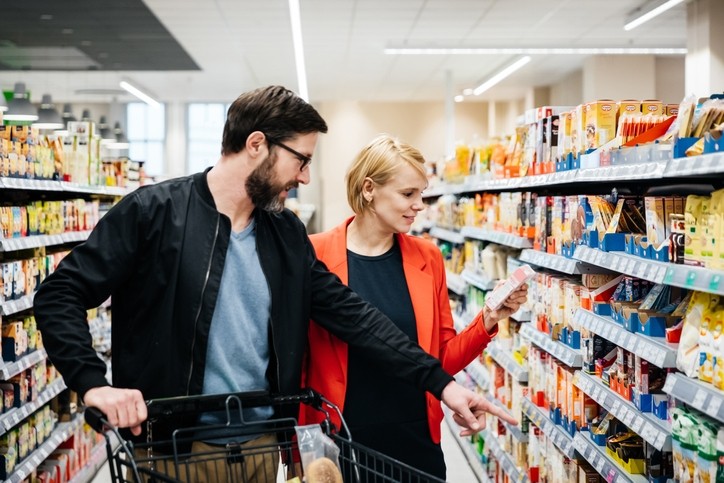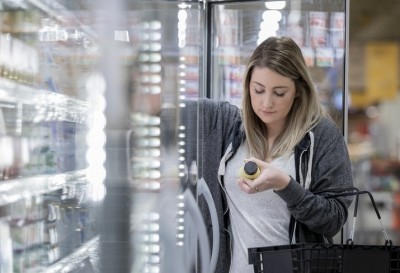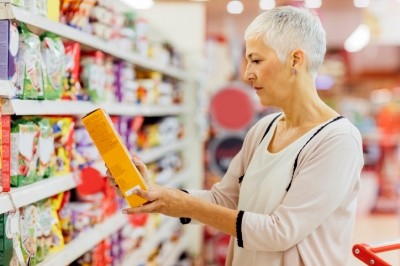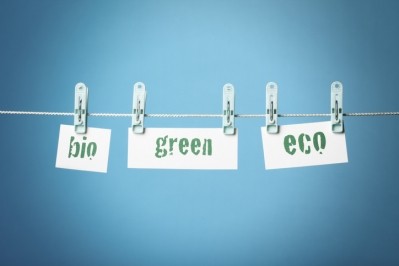Eco-labels: why it’s ‘crucial’ for a dominant one to emerge

Following the launch of Eco-Score earlier this year, UK-based non-profit Foundation Earth will pilot a competitor front-of-pack score to help consumers check the environmental footprint of products before they buy.
Kicking off later this year, the trial will feature products from Costa Coffee, Mighty Pea and Meatless Farm.
Marjolein Hanssen, consumer food analyst at Rabobank, said the trend emerging for challenger environmental labels to stream into the market has widespread implications for food producers, consumers and retailers.
She’s compared how each label is calculated, and what they show. Foundation Earth’s scoring system seems similar to the approach used by Eco-Score, she explained.
It also uses a life cycle assessment (LCA) method – developed by sustainability advisory firm Mondra – to assess the environmental impact of products from farming to transport with scores ranging from ‘A+’ to ‘G’.
“The real difference between the two scoring systems is the datasets and LCA methodology they are based on. Eco-Score calculates its score using an LCA drawn from French environment and energy management agency ADEME’s Agribalyse database. Foundation Earth’s pilot will use the method developed by sustainability advisory firm Mondra, based on academic paper Poore & Nemecek, to source its data,” Hanssen revealed.
“In contrast to Foundation Earth, Eco-Score also awards bonus points or penalties for factors outside the scope of the LCA. For example, if an apple is fair trade, or a ready meal’s packaging can be easily recycled, it will achieve a higher score.
“Foundation Earth wants to be more granular in accounting for differences between producers of the same product within its LCA calculation. How it will do so, and whether it will need food producers to gather the necessary data themselves, remains to be seen."
What are the key considerations and practical advice for producers looking to partner with an environmental certification provider – how do they chose? There are now currently almost 460 eco labels globally, with over 120 different types in use on food and drink products.
Some in the industry regard eco-labelling as nothing more than a marketing gimmick that will only appeal to those consumers who are already climate conscious.
Others fear they simply allow more companies more opportunities to greenwash, or give a false impression of their environmental credentials.
When it comes to communicating sustainability credentials to consumers, simplicity is key, according to Hanssen. “Environmental data is highly complex, and for it to be effective, it’s vital that a score that incorporates all the different factors and translates them into an easily digestible and standardised metric, rises to the top.”
Hanssen warned that without a single score and methodology, consumers may struggle to understand genuinely environmentally friendly products. “Even if this is not ideal from a methodological standpoint, everyday consumers will struggle to weigh up the differences between products if labels have competing scoring systems. This is especially true when price, taste and nutrition are added to the mix,” she said.
“While it’s still early days, the race is on for food producers to overhaul their environmental credentials. Sustainability certifications could become widely adopted in the future, and as more consumers and retailers demand greater transparency around the environmental impact of their food, producers will need to reformulate their offerings and assess their supply chains to be able to compete for the highest scores.”
But, perhaps most significantly, the rising popularity of FOP environmental labels could mean producers soon have a much broader set of competitors, including producers in their own category, but also those in other categories, she added.
“For example, a consumer might decide to replace their regular cashew nuts with a more sustainable version, or a completely different snack with a higher environmental score. Alternatively, a shopper might be surprised by the high environmental footprint of an avocado and opt for hummus on their toast instead. This could trigger some food producers to rethink their product portfolio or consider reformulating their products with more sustainable ingredients.”
























